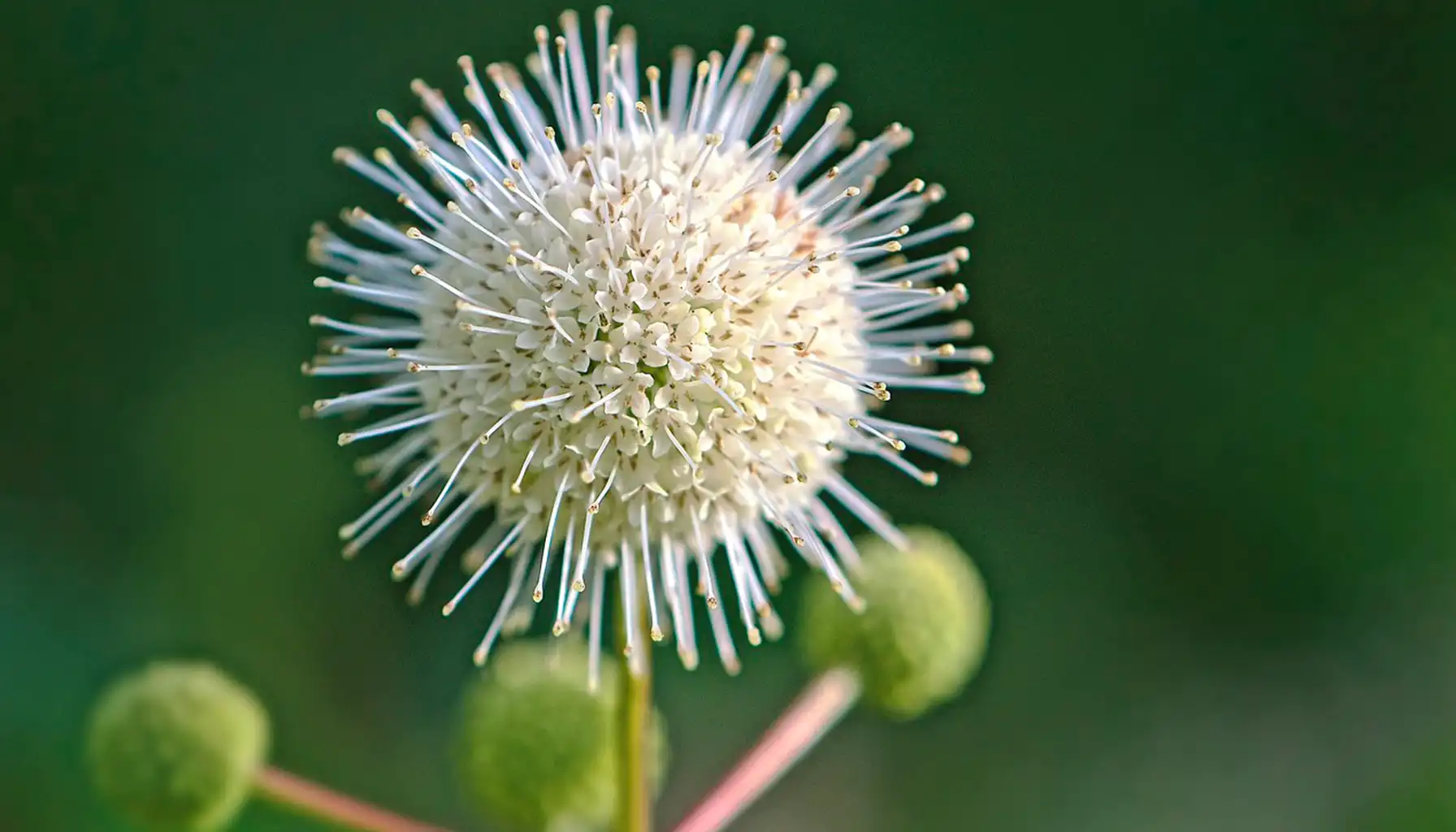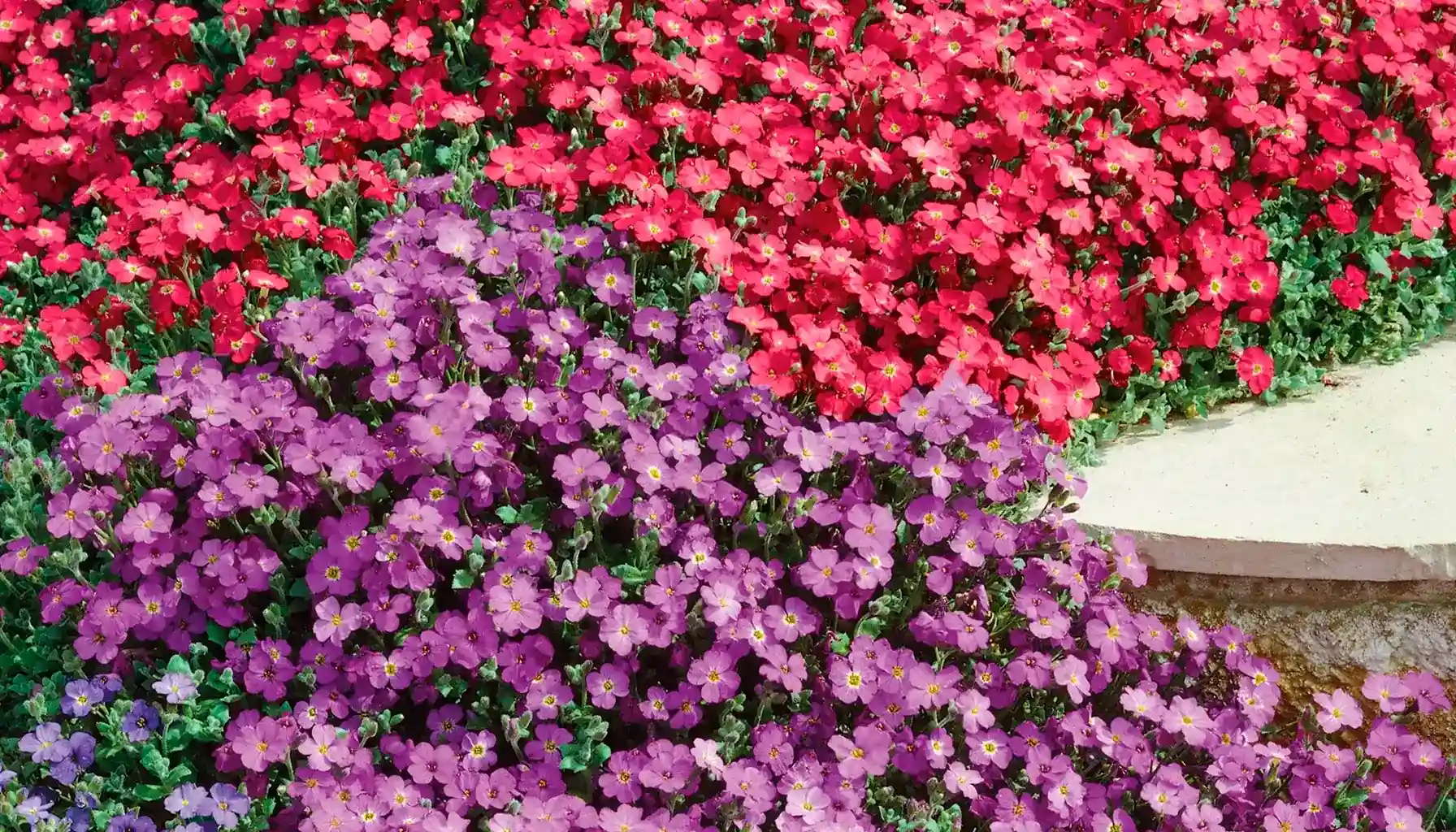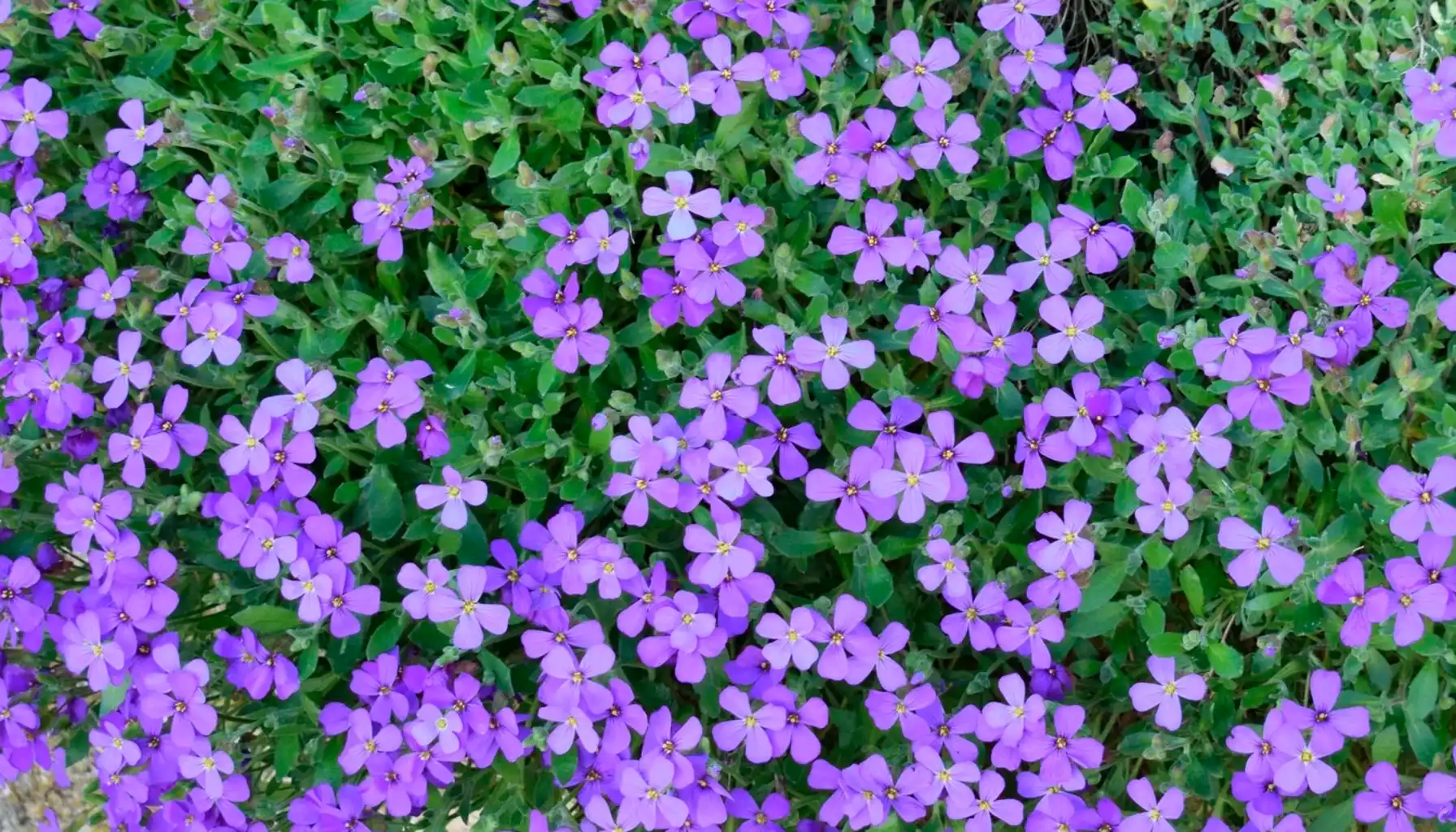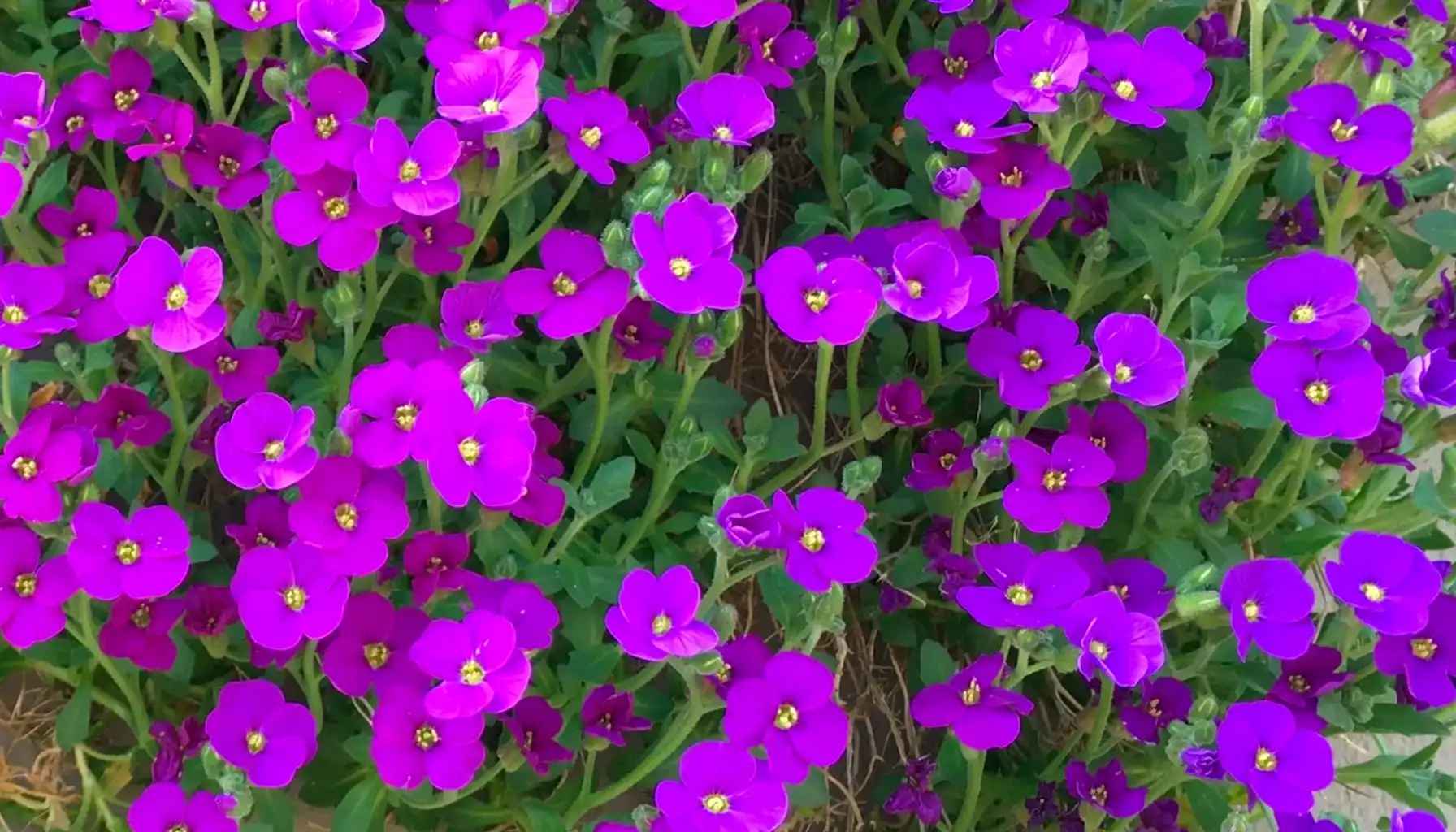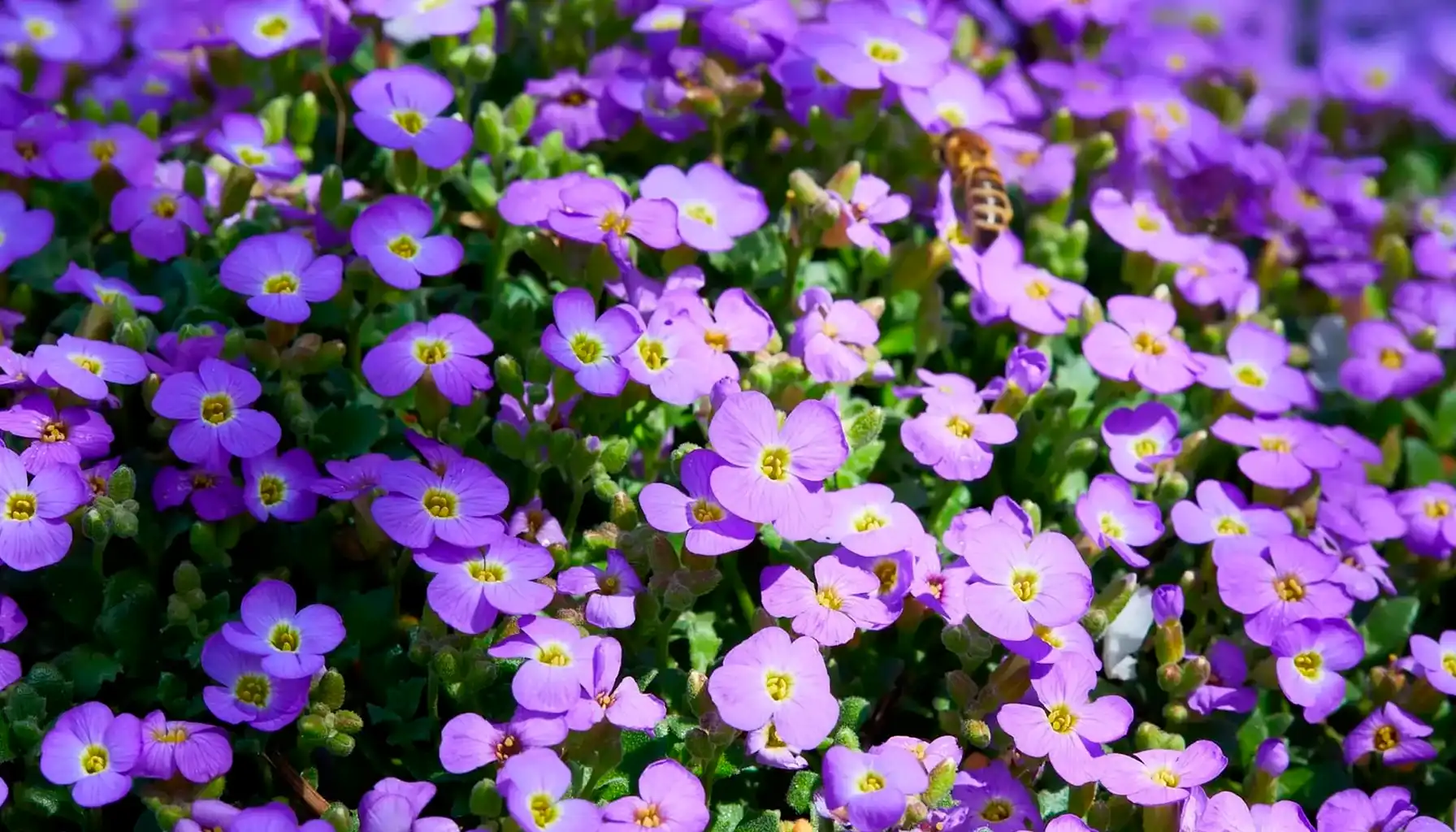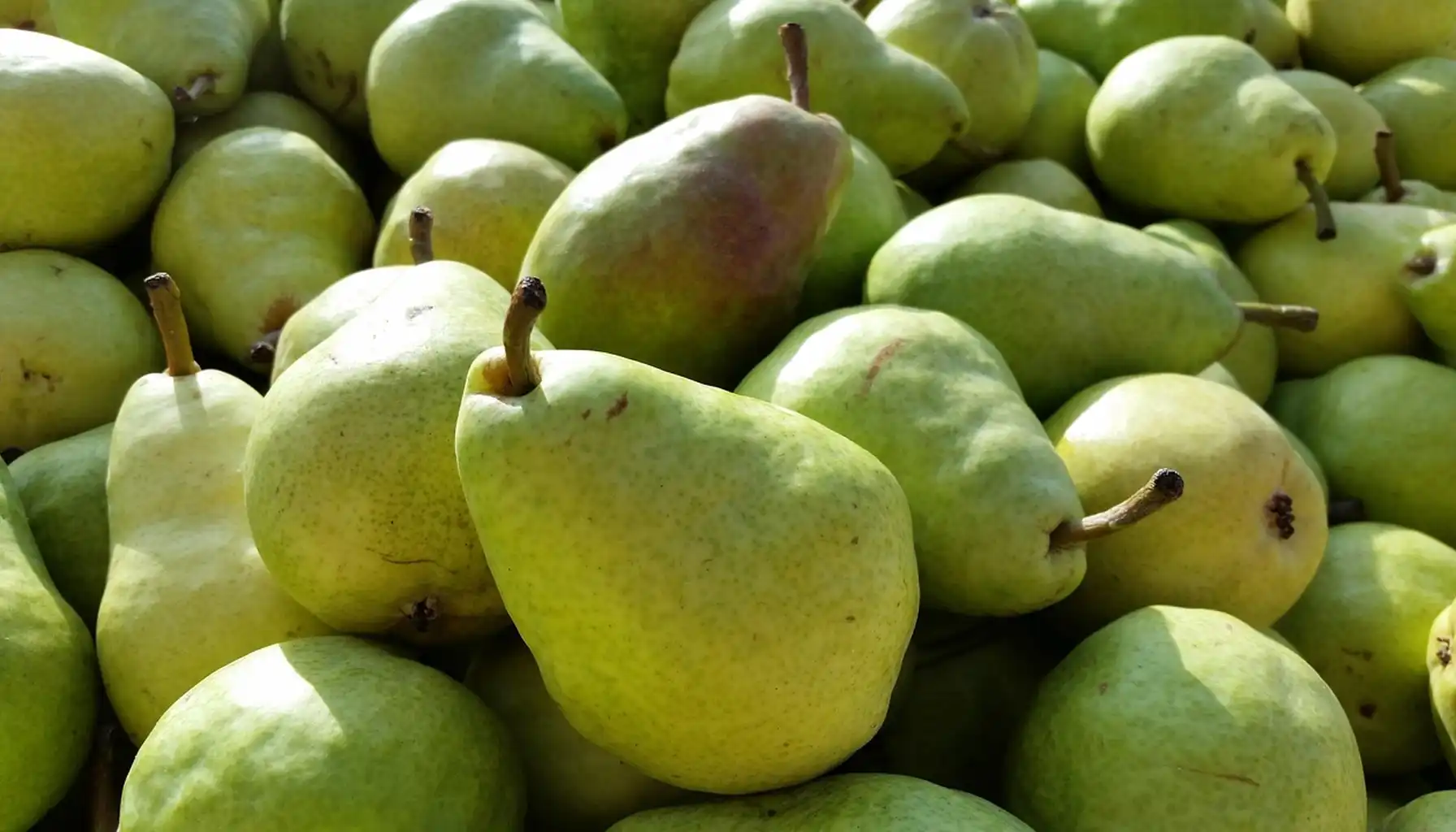The aubrieta flower is a spring bloomer that grows on rocks and walls. It belongs to the mustard family; its qualities are to form evergreen cushions as winter fades.
Purple, pink, or blue blossoms appear in early spring; they are beautiful but also useful: flowers attract bees and other pollinators when few other plants are in bloom.
There are a few garden plants like this, pretty sturdy and beginner-friendly. But any flower is still prone to some diseases, sometimes it’s invisible to the human eye. Gardeners use a plant identification app to scan any plant for possible diseases and get recommendations on how to take care of it.
The flower likes rocky soil, crevices, and slopes. Mix it with other perennials, Lavender or Yarrow; use it in rock gardens, borders, and stone walls (read more on how to compose a Bluestone path). It stays compact and tidy, and it’s also perfect for edging paths or spilling from containers.
Aubrieta at a Glance: Botany & Habit
The aubrieta plant is in the Brassicaceae family, like cabbage and alyssum. It is an evergreen perennial, pretty compact, has mat-forming growth, and early spring flowers.
Native to southeastern Europe and western Asia, aubrieta grows in mountainous regions, clinging to rocky slopes and crevices. Aubrieta forms low mounds, usually 4-6 inches tall, spreading up to 18 inches wide. The gray-green leaves stay alive year-round in many climates, which is a neat groundcover even when not in bloom.
In spring, the plant releases clusters of four-petaled flowers in shades of purple, violet, pink, and occasionally white. One of the most well-known species is aubrieta deltoidea, which is used as the base for many modern hybrids. One of the features of this type is strong flowering and tolerance for rocky, alkaline soils.
Must-Grow Cultivars & Colors
Aubrieta offers a wide range of cultivars suited for rock gardens, borders, and wall plantings. While all varieties share the same mat-forming habit and spring bloom, subtle differences in flower color, growth form, and vigor make some better for specific uses.
Classic and Modern Favorites
‘Whitewell Gem’. The aubrieta whitewell gem is one of the most popular selections. It has masses of vivid violet-purple blooms in spring. The plant forms neat, dense cushions about 4 inches tall. Perfect for edging or draping over low walls
‘Cascade Purple’. A trailing hybrid, aubrieta cascade purple, grows slightly looser than mounding forms, spilling attractively from crevices or containers. It shows strong early flowering and covers the ground quickly
‘Purple Cascade’. Though similar in color, aubrieta purple cascade has a vigorous trailing habit, ideal for rock walls or hanging baskets
Dark Blue Selections. For cooler tones, try dark blue rock cress aubrieta, often sold under German trade names like “Blaukissen.” These cultivars form dense mats with deep indigo flowers
Pink and Mixed Forms. Many modern hybrids have shades of pink, lavender, and purple. These blends work in mixed rock beds and borders, if you pair them with silver-leaved plants
Purple Favorites. Richly colored purple aubrieta cultivars remain the most common
Cultivar | Type/Series | Color | Habit | Height x Spread | Best Use | Notes |
‘Whitewell Gem’ | Classic | Vivid purple | Cushion | 4" × 12" | Borders, walls | Dense mat, reliable bloom |
‘Cascade Purple’ | Hybrid | Deep purple | Trailing | 4" × 18" | Walls, containers | Fast spread, early bloom |
‘Purple Cascade’ | Hybrid | Purple | Trailing | 4" × 20" | Rock walls, baskets | Vigorous growth |
‘Blaukissen’ Group | Trade group | Indigo blue | Cushion | 4" × 12" | Rock gardens, edging | German selections, tight form |
Mixed Hybrids | A. × hybrida | Pink to violet | Mounding | 4" × 14" | Mixed beds, slopes | Varied color blends |
What is Rock Cress
The name “rock cress” is one of the Aubrieta names. As a true alpine, rock cress aubrieta likes crevices, rocky slopes, and dry walls where soil is thin and drainage is excellent.
It has a spreading habit, so gardeners drape it over stones; the plant forms a living cascade that fills gaps between rocks. Aubrieta rock cress is used as a groundcover in rock gardens, wall plantings, and along borders or pathways.
Its foliage prevents weeds and stabilizes soil on gentle slopes. During early spring, the plant transforms into a sheet of color, usually purples and blues. Rock cress tolerates cold winters and moderate summer heat if you plant it in well-drained soil and full sun.
Species & Hybrid Background
The Aubrieta genus includes around a dozen species, but most plants seen in gardens today are derived from a few key types and their hybrids.
These species originate from mountainous regions in southeastern Europe and western Asia, where they cling to limestone slopes and live in full sun with excellent drainage.
The best-known wild species is aubrieta deltoidea, native to the Balkans and Turkey. It forms neat mats with small gray-green leaves and abundant purple flowers each spring
Another species, aubrieta gracilis, is less common in cultivation, but it’s a good choice for small crevices and alpine troughs
Most modern garden varieties are grouped under aubrieta hybrida, a collective name for numerous crosses and selections bred because they have improved vigor, flower size, and diverse colors.
Hardiness & Siting
Most varieties grow in aubrieta zone 4 through 9, depending on the cultivar and local conditions. In cooler regions, aubrieta handles frost easily and often stays evergreen under light snow cover. In hotter climates, it prefers afternoon shade and extra moisture.
Site aubrieta in full sun where it receives at least six hours of direct light daily. It tolerates partial shade, but less light can cause leggier growth and fewer blooms.
Ideal planting spots include stone walls, rock gardens, raised beds, and edges of paths or retaining walls, places with sharp drainage and good air movement.
Soil should be moderately fertile, well-drained, and slightly alkaline. Adding crushed limestone or garden lime helps if the soil is too acidic. Read more about the soil in the article How Does pH Level Affect Plant Growth.
In cold regions, aubrieta in winter needs protection against freeze-thaw cycles. Mulching lightly with gravel or pine needles helps prevent frost heave. In containers, move pots to a sheltered spot and reduce watering.
Zone | Exposure | Winter Notes | Heat Notes | Drainage Tip |
4–5 | Full sun | Evergreen under snow; light mulch helps | Moderate tolerance | Raised bed or slope recommended |
6–7 | Full sun to part shade | Protect from freeze–thaw in bare soil | Needs occasional summer watering | Add gravel or sand to mix |
8–9 | Morning sun, PM shade | Semi-evergreen; monitor for root rot | Provide shade in the hottest hours | Use fast-draining, gritty substrate |
Planting & Containers
In the garden, space plants about 12 inches apart to allow their mats to spread and fill in without overcrowding. Loosen compacted soil and mix in gravel or coarse sand to improve drainage.
Aubrieta’s roots are shallow, so avoid deep planting; just cover the root ball evenly with soil and water. Wall pockets, cracks, or slopes are excellent places for natural draping.
For container gardens, aubrieta in pots grows beautifully if you give it the right mix. Choose a pot with drainage holes and a gritty blend: half potting soil, one-quarter coarse sand, one-quarter perlite or small gravel.
Shallow containers (6–8 inches deep) suit its root system well. Pair aubrieta with low-growing companions like creeping thyme, sedum, or dwarf dianthus.
Water new plantings thoroughly, then allow the soil to dry slightly before the next watering. Overwatering can lead to root rot, especially in containers. Position pots in full sun for best bloom, and protect them from heavy winter rain by placing them in a sheltered spot.
Care Through the Season
Caring for an aubrieta is simple. Too much water or fertilizer can cause weak growth and reduced flowering, but light, regular attention helps maintain a compact shape and lush spring display.
Watering
Keep soil moderately moist but never soggy. Water deeply only when the top inch of soil is dry. Established plants can handle short dry spells, but drought combined with heat may cause leaf scorch or reduced blooms. In containers, check moisture more often since pots dry faster.
Light
Full sun ensures dense growth and heavy flowering. In hot zones, light afternoon shade prevents stress. Too much shade leads to legginess and fewer blooms.
Feeding
Aubrieta doesn’t need heavy feeding. In average garden soil, one spring application of a balanced, slow-release fertilizer or a light compost dressing is enough. Overfeeding encourages excessive foliage at the expense of flowers.
Pruning & Shearing
After flowering, shear back spent blooms and some foliage to keep plants tidy and encourage fresh growth. Avoid cutting into woody stems; trim only soft, green parts.
Seasonal Maintenance
Regular checks for crowding and dead patches help maintain a healthy mat. Refresh older clumps by division every 3-4 years.
Is Aubrieta Annual or Perennial? Aubrieta is a perennial, not an annual. In very cold zones, plants may die back slightly but regrow from the crown once temperatures rise.
Propagation: Seeds, Seedlings & Division
Aubrieta can be propagated in two main ways: by division or from seed. Division is the quickest method, but you can start from Aubrieta seeds if you need to experiment with color variations.
Division
Divide mature clumps every three to four years in early spring or early fall. Lift the plant gently, split it into sections with healthy roots, and replant immediately in fresh soil. Water lightly to settle. Division rejuvenates older mats, prevents overcrowding, and produces flowering-size plants by the next season.
Seed Starting
When growing aubrieta seedlings, remember that hybrids may not bloom true to the parent color. Use fresh seed and start indoors 6-8 weeks before the last frost.
Seeds need light to germinate, so press them gently onto the surface of the moist mix; do not cover. Keep trays at 18–21°C (65–70°F) and evenly moist until germination, which usually takes 2–3 weeks.
Deer, Pests & Problems
It rarely suffers from serious pest or animal damage. As a member of the mustard family, it has a slightly bitter taste, so it’s deer and rabbit resistant.
Root rot develops when plants sit in heavy, wet soil, particularly in winter. Downy mildew may appear if plants are crowded and airflow is limited, like in humid or shaded areas. Occasional legginess can happen after flowering if the plant isn’t sheared back or receives too little light. Weak bloom is usually tied to excessive nitrogen or shade.
Conclusion
Once established, it asks for little: just well-drained soil and a quick shear after flowering. In return, it gives a living carpet of color that supports bees and brightens the landscape when few other plants bloom.
FAQs
Is aubrieta an annual or a perennial?
Aubrieta is a perennial. It forms evergreen mats that return each spring and can live for many years with proper drainage and occasional division.
How do I overwinter aubrieta in containers?
Move pots to a sheltered, frost-free spot like an unheated porch or garage. Wrap the container with burlap or bubble wrap and reduce watering. Keep soil just slightly moist to prevent root rot.
When is the best time to shear aubrieta?
Shear after flowering in late spring. Trim off spent blooms and a small amount of foliage to encourage fresh growth and maintain shape.
Why is my aubrieta blooming poorly this year?
Weak flowering usually comes from too much shade or excess fertilizer. Move the plant to full sun and avoid high-nitrogen feeding.
Will aubrieta grow in cracks or on walls?
Yes. Its shallow roots make it ideal for wall crevices and rocky slopes where other plants struggle, as long as drainage is excellent.
How often should I water aubrieta in hot weather?
Water deeply once or twice a week during heatwaves. Let the top inch of soil dry between waterings to prevent rot.
Does aubrieta stay green in winter?
In most zones, yes. It remains evergreen or semi-evergreen depending on cold severity. Some leaf browning may occur, but new growth appears in spring.
Related AI Plant Finder Posts
